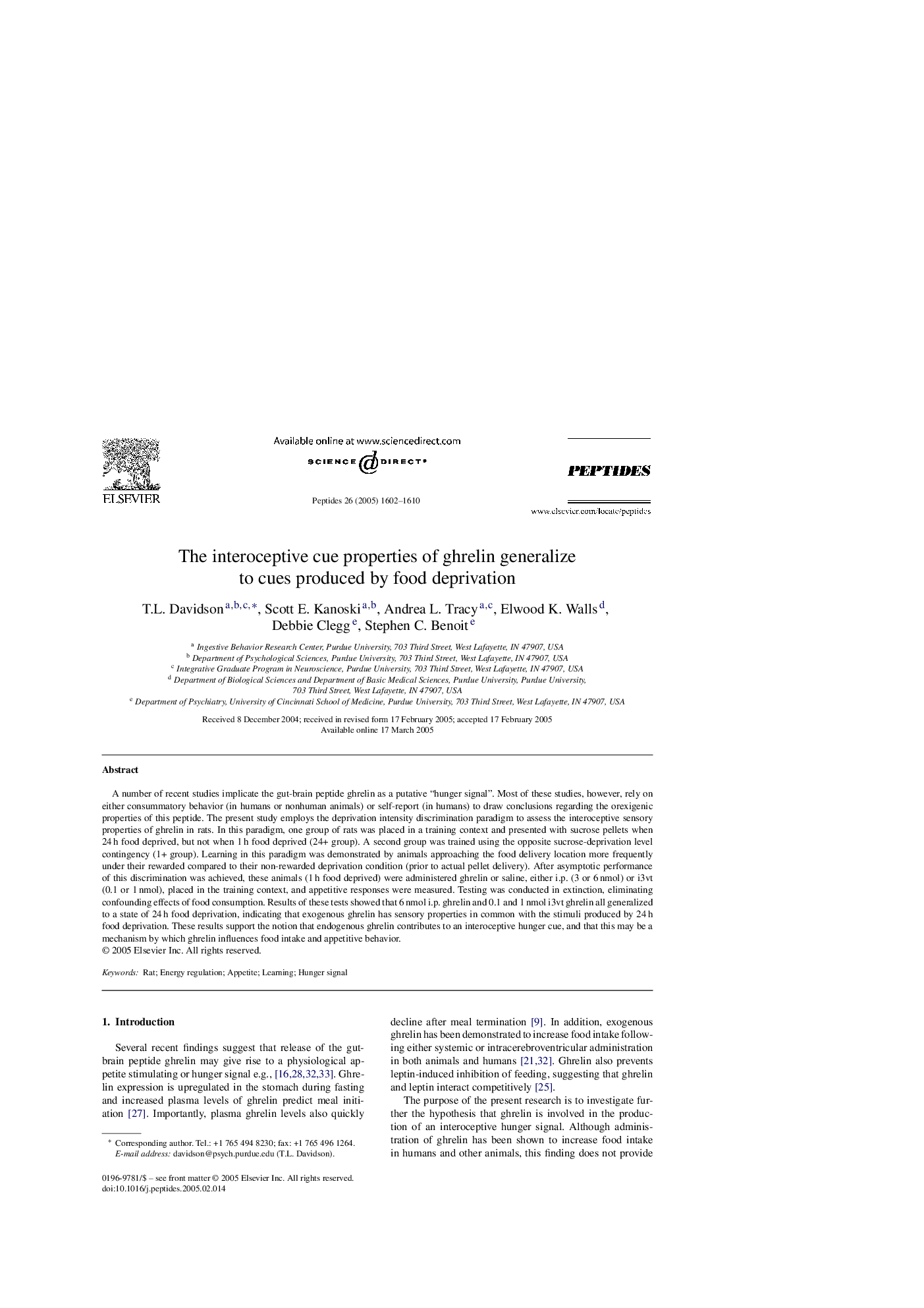| Article ID | Journal | Published Year | Pages | File Type |
|---|---|---|---|---|
| 10836901 | Peptides | 2005 | 9 Pages |
Abstract
A number of recent studies implicate the gut-brain peptide ghrelin as a putative “hunger signal”. Most of these studies, however, rely on either consummatory behavior (in humans or nonhuman animals) or self-report (in humans) to draw conclusions regarding the orexigenic properties of this peptide. The present study employs the deprivation intensity discrimination paradigm to assess the interoceptive sensory properties of ghrelin in rats. In this paradigm, one group of rats was placed in a training context and presented with sucrose pellets when 24Â h food deprived, but not when 1Â h food deprived (24+ group). A second group was trained using the opposite sucrose-deprivation level contingency (1+ group). Learning in this paradigm was demonstrated by animals approaching the food delivery location more frequently under their rewarded compared to their non-rewarded deprivation condition (prior to actual pellet delivery). After asymptotic performance of this discrimination was achieved, these animals (1Â h food deprived) were administered ghrelin or saline, either i.p. (3 or 6Â nmol) or i3vt (0.1 or 1Â nmol), placed in the training context, and appetitive responses were measured. Testing was conducted in extinction, eliminating confounding effects of food consumption. Results of these tests showed that 6Â nmol i.p. ghrelin and 0.1 and 1Â nmol i3vt ghrelin all generalized to a state of 24Â h food deprivation, indicating that exogenous ghrelin has sensory properties in common with the stimuli produced by 24Â h food deprivation. These results support the notion that endogenous ghrelin contributes to an interoceptive hunger cue, and that this may be a mechanism by which ghrelin influences food intake and appetitive behavior.
Keywords
Related Topics
Life Sciences
Biochemistry, Genetics and Molecular Biology
Biochemistry
Authors
T.L. Davidson, Scott E. Kanoski, Andrea L. Tracy, Elwood K. Walls, Debbie Clegg, Stephen C. Benoit,
